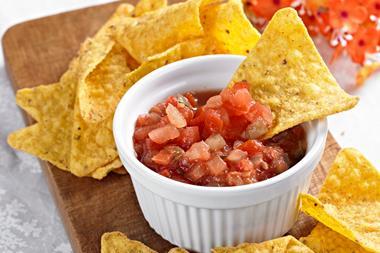After this issue goes to press, I am due to meet the Food Standards Agency for lunch. So what will I be talking about as I pick, nervously, over my strangely discoloured food? I suspect, as well as our calorie-count story from last month, this week's satfat proposals (see p4) will feature. And you may be surprised to hear I find some of them really quite sensible.
I am pleased low-fat ice creams and Cheddars can now be called ice cream and Cheddar. I also believe reduced portion sizes on snack foods are a good idea: while 'Big Eat' crisp packets and 'Duo' confectionery bars offer better value, for example, like a number of 'sharing' products coming into the market, it's an easy excuse to sell more product and encourage the consumer to binge. See: this magazine is independent.
On the other hand, the FSA has arrived woefully late, and still very half-heartedly, at the idea of portion control. In its obsession with purely notional 100g measures (which are 'scientific' only in so far as they provide a constant), a great deal of time and money has been wasted without getting to the heart of the matter: that obesity is caused predominantly by people eating and drinking too much.
Government, the FSA and the industry haven't done enough to stop this. That why I support the IGD's attempts (The Grocer, 28 November) to put consistent portion-based information and portion sizes at the heart of future labelling and NPD. Only last week I bought a Sharwood's meal kit and, while I could find a breakdown of the fat, salt and sugar for 100g of each of the several dishes, I had to get out my calculator to work out how many calories I would consume if I ate half the contents.
We also seriously doubt the FSA's costings. Never mind who ate all the pies. Who calculated the cost of pie reformulations at £3,000 a SKU? If a lower-fat McVitie's digestive costs £2m, I'd suggest the FSA needs to use the back of a bigger envelope.
More Comment & Opinion
I am pleased low-fat ice creams and Cheddars can now be called ice cream and Cheddar. I also believe reduced portion sizes on snack foods are a good idea: while 'Big Eat' crisp packets and 'Duo' confectionery bars offer better value, for example, like a number of 'sharing' products coming into the market, it's an easy excuse to sell more product and encourage the consumer to binge. See: this magazine is independent.
On the other hand, the FSA has arrived woefully late, and still very half-heartedly, at the idea of portion control. In its obsession with purely notional 100g measures (which are 'scientific' only in so far as they provide a constant), a great deal of time and money has been wasted without getting to the heart of the matter: that obesity is caused predominantly by people eating and drinking too much.
Government, the FSA and the industry haven't done enough to stop this. That why I support the IGD's attempts (The Grocer, 28 November) to put consistent portion-based information and portion sizes at the heart of future labelling and NPD. Only last week I bought a Sharwood's meal kit and, while I could find a breakdown of the fat, salt and sugar for 100g of each of the several dishes, I had to get out my calculator to work out how many calories I would consume if I ate half the contents.
We also seriously doubt the FSA's costings. Never mind who ate all the pies. Who calculated the cost of pie reformulations at £3,000 a SKU? If a lower-fat McVitie's digestive costs £2m, I'd suggest the FSA needs to use the back of a bigger envelope.
More Comment & Opinion















1 Readers' comment